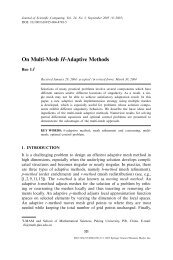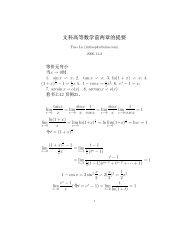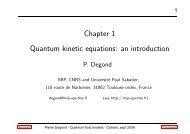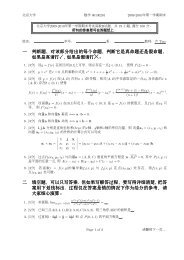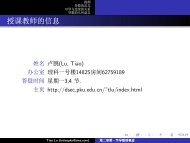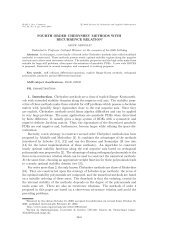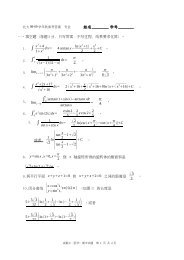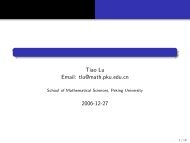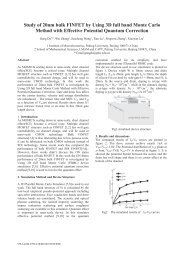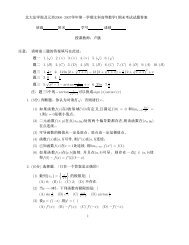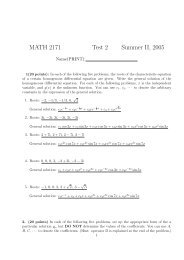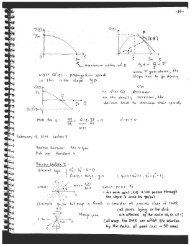Abstract
Abstract
Abstract
Create successful ePaper yourself
Turn your PDF publications into a flip-book with our unique Google optimized e-Paper software.
CHAPTER 1. OVERVIEW 6<br />
and identfying biological and chemical warfare agents. In a battlefield environment,<br />
the ability to remotely detect biological and chemical warfare agents would reduce the<br />
risk of injuries and casualties. Also, computational efficiency and data transmission<br />
will be greatly increased once sustainable terahertz frequencies are possible. The goal<br />
of this research is to create a numerical tool for engineers and scientists to use in order<br />
to understand the physical mechanisms behind the RTD’s operation and potentially<br />
exploit these mechanisms to create terahertz frequency devices.<br />
The problem of numerically simulating nanoscale semiconductor devices with the<br />
Wigner formalism is an active field of research. The numerical method we use is a<br />
finite-difference approximation as described in [8]. Other discretizations can be used.<br />
In [32], [31], the author considers using a spectral discretization. Here, functions<br />
are approximated by a truncated Fourier series, where the coefficients on the finite-<br />
dimensional Fourier basis are computed. In [32], the author proposed a mixed finite<br />
difference-spectral method (differences in x and t space, spectral in k space) for the<br />
coupled Wigner-Poisson equations. This is for a bounded domain in one-dimensional<br />
x space, with time-dependent Dirchlet boundary conditions. In the paper, the author<br />
derives errors estimations and establishes consistency of the method, gets a priori nu-<br />
merical bounds on the solution, and presents numerical results. The author, though,<br />
do not account for scattering effects that will occur within the semiconductor. This<br />
was an extension of [31], where the author only considered the linear Wigner equation<br />
(i.e. no coupling with Poisson’s equation, only a fixed potential U is given). A reason




